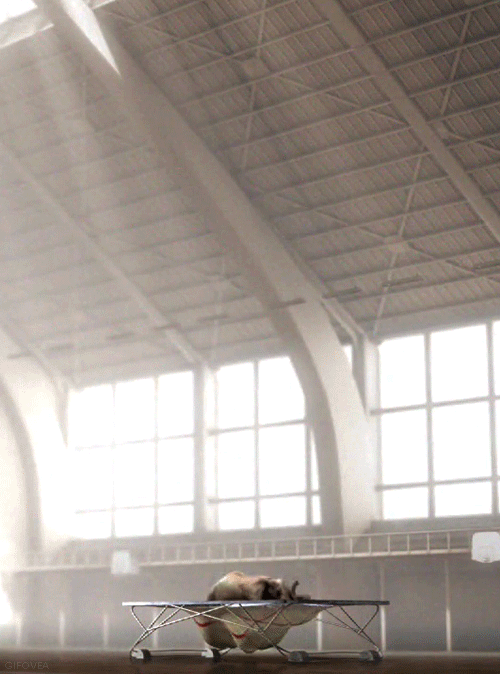Sir Isaac Newton, English author, mathematician, theologian, astronomer, and physicist, wrote his Philosophiæ Naturalis Principia Mathematica, a book that changed the way scientists thought about mechanics and the way we interact with the physical universe. In Principia, Newton outlines his laws of motion and universal gravitation- laws that describe movement as a direct result of the surrounding environment. These three laws are a crucial part of physics, and we’ve provided three simple examples to help you in your understanding of Isaac Newton and his Three Laws of Motion!
The First Law Of Motion
Newton’s first law of motion states:
“Every object in a state of uniform motion tends to remain in that state of motion unless an external force is applied to it.”
As any inspiring physics tutor would explain, this is also known as Newton’s law of inertia. You may have learned it as the following: “Every object will remain at rest or in uniform motion in a straight line unless compelled to change its state by the action of an external force” When an object moves, that movement will continue until something else causes it to stop. The opposite is also true- when an object is stationary, it will remain that way until something causes it to move. The following gif best explains Newton’s first law:
Now then. Here we see a giraffe traveling along in a tiny car. According to Newton’s first law of motion, the moving car should continue to move…unless something else causes it to stop moving. That’s where the wall comes in- that’s an external force. When the car hits the wall, it changes state and stops moving.
But wait, there’s more.
You’ll notice that the giraffe is also in motion. When the wall stops the car, the giraffe continues to move. In this case, the car is the external force that acts upon the giraffe. The giraffe continues to move until it has no where else to go. The car causes it to change state and come to a complete stop.
To summarize:
The car and giraffe move together,
When the car hits the wall, it changes state and stops moving. It becomes inert (can’t move). The giraffe continues to move.
The stationary car acts upon the still-moving giraffe. It causes the giraffe to change state and come to a complete stop.
The Second Law Of Motion
Newton’s second law of motion states:
“The relationship between an object’s mass (m), it’s acceleration (a), and the applied force (F) is F = ma.”
Acceleration and force are vectors. This means that they both have a certain magnitude (power) and direction (In this law the direction of the force vector is the same as the direction of the acceleration vector).
When a constant force acts on an object at rest, the object begins to accelerate, or change its velocity (how fast it’s going). When a constant force acts on an object in motion, it can cause that object to either speed up, slow down, or change direction.
High force = high mass + high acceleration
Low force = low mass + low acceleration
High force = low mass + high acceleration
Low force = high mass + low acceleration
A wonderful example of Newton’s second law of motion comes to us from the action-packed climax of The Avengers.
In this scene, a nuclear missile is headed straight for New York! The missile is an object in motion traveling with a high amount of force (high mass + high acceleration). Luckily, the one and only Tony Stark (in his Iron Man suit) is quickly traveling in the same direction, trying to divert the missile.
At 0:35, Tony accelerates and grabs the missile. As you can see when he catches up to it, he and the missile travel at the same rate of acceleration. Then, at 1:16 he exerts a constant upward force on the missile, which causes it to gradually change direction and travel upwards, narrowly missing the city. As they ascend, Tony and the missile gradually travel at the same speed, and they travel through the portal. The missile’s mass (heavy), multiplied by its acceleration (high), causes the missile to exert a high amount of force as it slams into the ship and explodes!
To learn in more detail about how mass acceleration work, contact a tutor for hands-on physics homework help.
The Third Law Of Motion
Newton’s third law of motion states:
“For every action, there is an equal and opposite reaction.”
In other words, when a force is exerted in one direction, the same force is exerted in the opposite direction. Think of a few everyday examples:
- When you jump, a force is being exerted on your body, which makes you go UP. At the same time, an equal force is being exerted DOWN on the ground. Essentially, you and the ground are pushing off of one another, and the result is this:

- When you go swimming, and you kick your legs as you move through the water, what happens? Your legs exert a force on the water, and the water exerts the same force against your legs. As a result, you travel in one direction, and the water travels in the opposite direction in the form of ripples.
- Do some push-ups. Your hands exert a downward force on the ground, and the ground exerts an upward force on you, causing you to rise and fall.
- Go outside and watch the birds fly around. Each time they flap their wings, they exert a downward force on the surrounding air. At the same time, the air exerts an upward force on the bird’s wings. This causes the bird to gain altitude, and before you know it, they have achieved flight!
And those are Issac Newton’s three laws of motion in a nutshell! Of course, these are basic definitions and examples- StudyGate has tons of knowledgeable tutors that can provide all kinds of detailed explanations about Newton’s laws and so much more! We’ve got tutors for biology, chemistry, physics, astronomy- whatever you need! If you’re looking for some more science help, click on the buttons below to get started!
Need Homework Help? Click Here!


